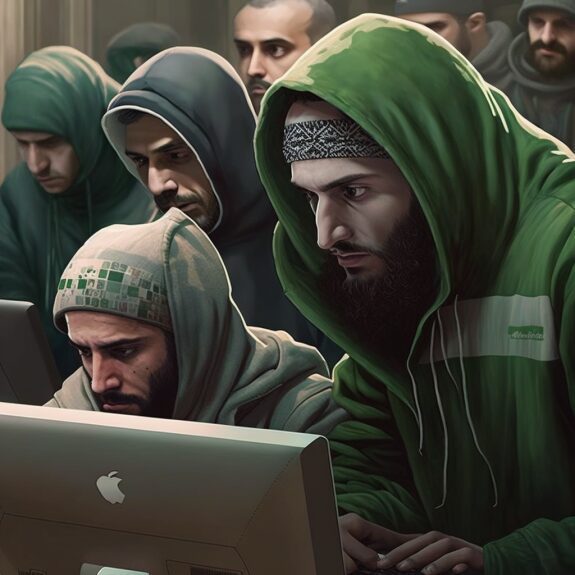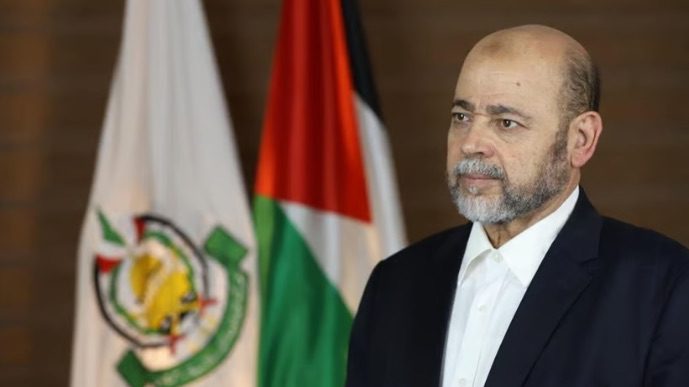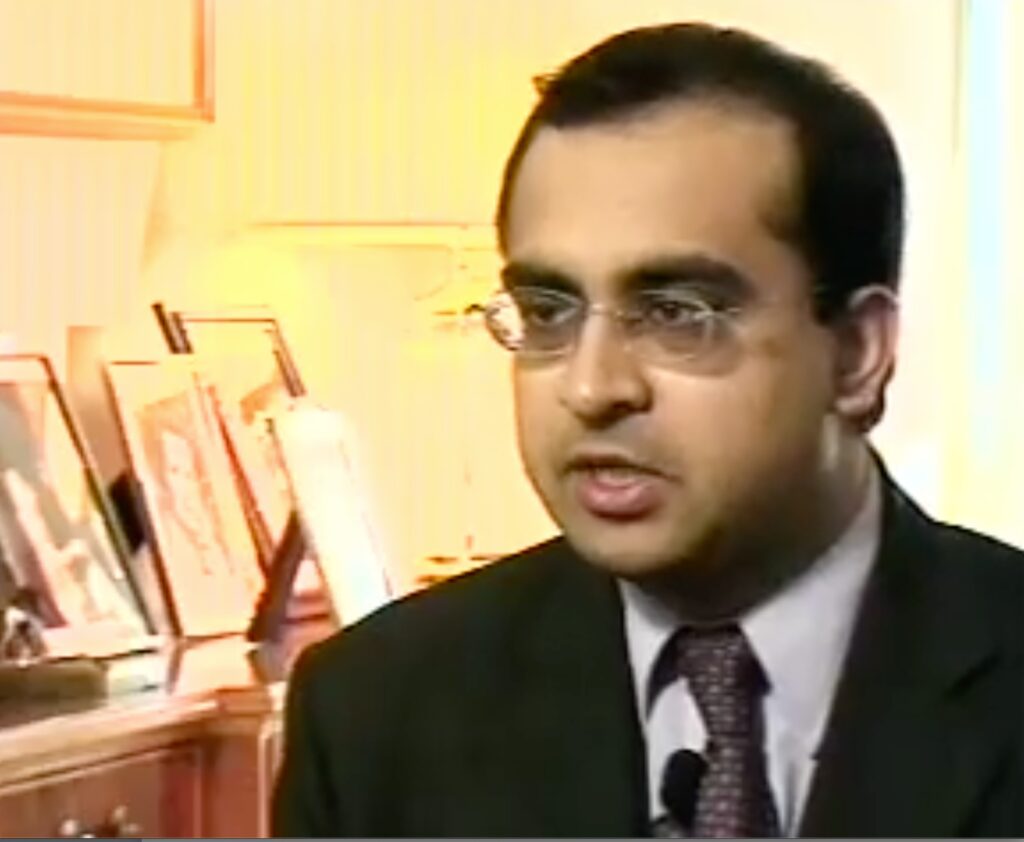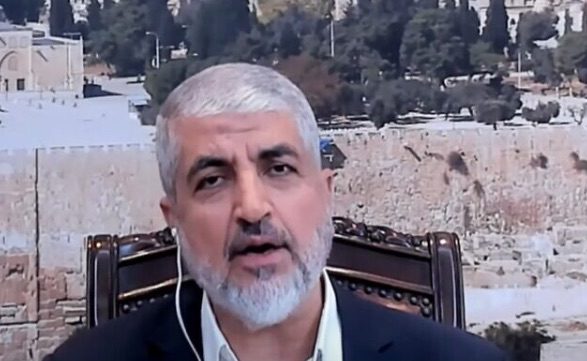In the aftermath of the war against Israel launched by Hamas terrorists in a bloody massacre of 1,400 – mostly civilians on the morning of October 7, 2023, I opened my investigative case files from 19 years ago.
Investigative producer Todd Bensman and I, then reporting for the CBS station group in Dallas, focused on how terrorists were using the Internet to raise money and recruit followers.

Our interest stemmed from my embedded assignment with the U.S. Army’s 552 ADA Patriot Missile Battalion and the 101st Airborne Division during the invasion of Iraq in 2003. By late 2004, U.S. and British military convoys started suffering devastating roadside bombings.
We discovered the first of dozens of grainy Internet movie files that were being used to recruit suicide bombers. This one flashed a title: “Al Qaeda Movement in the Land of the Two Rivers. An Operation Against the British Troops Near Baghdad.”
The streaming online video clip showed a car as it drove slowly up a single-lane road, away from the cameraman, who shakily zooms in as it gathers speed toward a British checkpoint. A caption appeared, reading, “Here goes the brave lion to tear up his prey and to win paradise.” The cameraman spoke in Arabic, his voice rising with “God is Great, God is Great” as the car at center screen arrived at the British checkpoint and a soldier standing in the road.
Suddenly, a massive fireball of orange and black lashed upward and outward, instantly slaughtering him and wounding two other British soldiers of the Black Watch Regiment, along with the suicide bomber. The Jihadists responsible were then filmed at the scene of the carnage, kicking a dismembered arm left behind by a recovery tank squad.
The video clip had been posted by notorious terrorist Abu Musab al-Zarqawi’s organization within a few days of the actual November 7th, 2004 attack. Glorifying the slaughter of American soldiers and their allies in Iraq helped to enhance the global street credentials of Zarqawi among any like-minded person with access to a computer.
Zarqawi dubbed the “Prince of al-Qaeda” by Osama bin Laden, the mastermind of the 9/11 attacks, was later killed in Iraq by a coalition air strike on an isolated safe house north of Baghdad on the evening of June 7, 2006. With a $25 million American bounty on his head, the Jordanian-born Mr. Zarqawi had been the most-wanted man in Iraq for his leadership of Islamic terrorist groups that carried out many of the most brutal attacks of the war, including scores of suicide bombings, kidnappings, and beheadings.
Now, back to our 2004 investigation.
Bensman discovered that Aaron Weisburd, a self-appointed cyber warrior, had been running a crusade called Internet Haganah to expose and shut down these so-called “e-jihadists,” hosted by U.S.-based internet service providers.
Haganah is a Hebrew word meaning “defense” and became potent when it was chosen as the name of Jewish defense militias that fended off relentless Arab attacks on settlements before Israel’s 1948 establishment. The Haganah was a precursor to today’s Israeli Defense Force.
From his home office in the southern Illinois college town of Carbondale, the former computer programmer used a tracking program he had devised to identify Jihadist websites by the hundreds.
As in any war, even in cyberspace, those who shoot are liable to be shot at.
And figuratively, Weisburd, who is Jewish, had taken plenty of shots from the e-Jihadists who had come to hate him and the trouble he caused.
“Websites are central to their identity. It’s a window on their soul,” Weisburd explained. “They associate with these sites in a very personal way. And so, when you cause one of these sites to be shut down, you cause them personal pain. They’ll find their sites down and go to my site and find out it was me.”
Realizing a worldwide recruitment effort by Jihadists bent on terrorist attacks, Bensman and I meticulously sleuthed content distributed by Texas-based internet service providers. Our investigation uncovered an online magazine named Alsunnah that solicited suicide bombers to attack American and coalition troops in Iraq and Israelis.
We tracked the origins of the web magazine to an internet hosting company with ties to three Palestinian brothers who were later convicted on federal charges of providing material support to the terrorist group Hamas.
The Internet company named Synaptix was based in Richardson, Texas, a suburb of Dallas. Its management was intertwined with the Holy Land Foundation, which illegally acted as a fundraising arm for Hamas in America.
The Holy Land Foundation had hidden its financial support for Hamas behind the guise of charitable donations. The foundation and its five leaders were convicted on terrorism charges in November of 2008, following our investigative reports from three years earlier.
They had provided approximately $12.4 million in support to Hamas and its goal of creating an Islamic Palestinian state by eliminating the State of Israel through violent jihad.
The money was sent to Hamas groups in Gaza and the West Bank to support the families of Hamas martyrs, detainees, and activists.
According to an FBI wiretap, a Holy Land leader in New Jersey referred to a suicide bombing as “a beautiful operation.”
It was during this time period, in 2007, that Hamas seized power in Gaza.
The government also presented evidence at the terrorism trial that several of the convicted leaders of the Holy Land Foundation had family members who were Hamas leaders, including Hamas’ political chief, Moussa Abu Marzouk.
Before I delve further, it’s imperative to briefly jump to the present day—where the echoes of history about Marzouk are perhaps louder than ever.
On October 10th, three days after Hamas massacred 260 people at a music festival, the Intelligence Podcast for the Economist Magazine Interviewed Marzouk at its studio in Doha, Qatar where he resides.
Marzouk expressed no remorse, refused to admit that his group planned to kill civilians, and denied that Iran was involved.
The Hamas political leader claimed their main target was fifteen military posts and that festival goers standing in line for tickets may have coincidentally ended up in the line of fire.
Ultimately, Marzouk stressed that Hamas would never recognize the State of Israel’s right to exist and predicted that Hamas would defeat Israel no matter how many Palestinians have to die.
To fully appreciate the magnitude of today’s events, let us pivot back to our investigation of Hamas nineteen years ago.
In January of 2005. Bensman and I flew to London following a digital trail from Dallas to the United Kingdom.
We tracked Alsunnah, the online terrorist recruiting magazine distributed by the North Texas supporters of Hamas to the Centre for Islamic Studies in Birmingham, England.
We obtained a propaganda leaflet circulated by the Centre that stated, “The youth of Iraq have no path to take other than martyrdom operations.”
Security experts in the United Kingdom described the Alsunnah journal and its articles justifying violence as influential among young militant Muslims in Europe, where the Internet version on Synaptix’s Richardson, Texas servers was well-read in large immigrant communities.
We interviewed Sajjan Gohel, the Director of International Security for the London-based Asia-Pacific Foundation, a counter-terrorism think tank researching security issues for international businesses.
Gohel told us that two Birmingham-area suicide bombers responsible for a bloody 2002 attack on an Israeli pub were believed to have been adherents of the Centre for Islamic Studies and readers of its Alsunnah magazine.
The counter-terrorism director told us, “If you preach hatred, talk about intolerance, you are very successfully able to carry out ideas in the minds of young individuals. Not all of them will go on to become terrorists, but you don’t need all of them. You just need a handful. It only took 19 people to create 9-11.”
A year later, in January 2006, we made another shocking discovery following my reports about links between the Alsunnah Internet Magazine and the Holy Land Foundation.
Mufid Abdulqader, a half-brother of Hamas political leader Khaled Meshaal, had worked as a civil engineer for the City of Dallas for eight years.
In August 2003, President George W. Bush announced that the U.S. Treasury designated Meshaal among six senior Hamas leaders as Specially Designated Global Terrorists. The designation was in response to a Hamas attack on August 19, 2003, in which a Palestinian suicide bomber detonated himself on a bus in Jerusalem, killing 23 people and wounding 130.
More shocking, Abdulquader led an eight-man singing group at fundraising events for Hamas across the United States.
We obtained a hidden camera video of one of their performances in front of a large audience.
Hate-filled lyrics glorified the killing of Jewish people. Singing, “Death to Jews is precious. Jews will not fear threats, only action. So Hamas hit them with the shoe bottoms of Islam and Hamas.”
In 2009, Adbulquader was sentenced to 20 years in federal prison for raising money for Hamas as part of the Holyland Foundation terrorism investigation.
The FBI had warned city officials, but they allowed the Hamas fundraiser to continue working with an expired engineering license with access to the city’s infrastructure.
Before I delve further, it’s imperative to briefly jump to the present day—where the echoes of history are perhaps louder than ever.
Three days after the Hamas attack on Israel, former Hamas chief Meshaal, the half-brother of the Dallas city engineer who was convicted of funneling money to Hamas, called for a worldwide protest.
Meshaal urged Muslims to join the fight against Israel and to “head to the squares and streets of the Arab and Islamic world” on Friday, October 13, 2023. His call for demonstrations triggered an alert to law enforcement across the United States.
In an interview on October 19th, Meshaal said the terror group was “well aware of the consequences” of its brutal October 7th attack on Israel, and insisted his group — which massacred civilians in the assault — does not target non-combatants, and said Palestinians would need to sacrifice lives to “liberate” themselves from Israel.
Meshaal, the former political leader of Hamas and still a senior leader in the terror organization, commented in an often combative interview on Wednesday with the Saudi-based Al-Arabiya news network.
He celebrated the “ingenious” attack, which he said was “in the context of legitimate resistance.” Meshaal spoke from Qatar and has not lived in the Gaza Strip for decades.
To fully grasp today’s unfolding drama, let’s turn back the clock to a seminal moment in Birmingham, England, during our 2005 investigation of the terrorist recruiting campaign that originated in North Texas.
We met Abukaheejah Waheed, who ran a politically moderate Islamic bookstore located a block away from the Centre for Islamic Studies. He was trying to counter the terrorist message spouted by the Centre’s Syrians, Egyptians, and Libyans.
Waheed prophetically warned that the Centre’s propaganda message would become the principal means of recruiting terrorists. He said, “You don’t have to put a gun in someone’s hand. You just have to put the thought in their mind. They will go and find their own gun.”
Postscript
On the morning of July 7th, 2005, four suicide bombers struck London’s transport network at rush hour, killing 52 people and injuring over 770 others on July 7th, 2005. Three of the blasts happened on the London Underground subway system.
The terrorist bombings occurred four months after Sajjan Gohel had warned in our broadcast and online news reports that London’s transport system was vulnerable to such an attack. Gohel had predicted it was not a case of if a bombing would occur but when.






